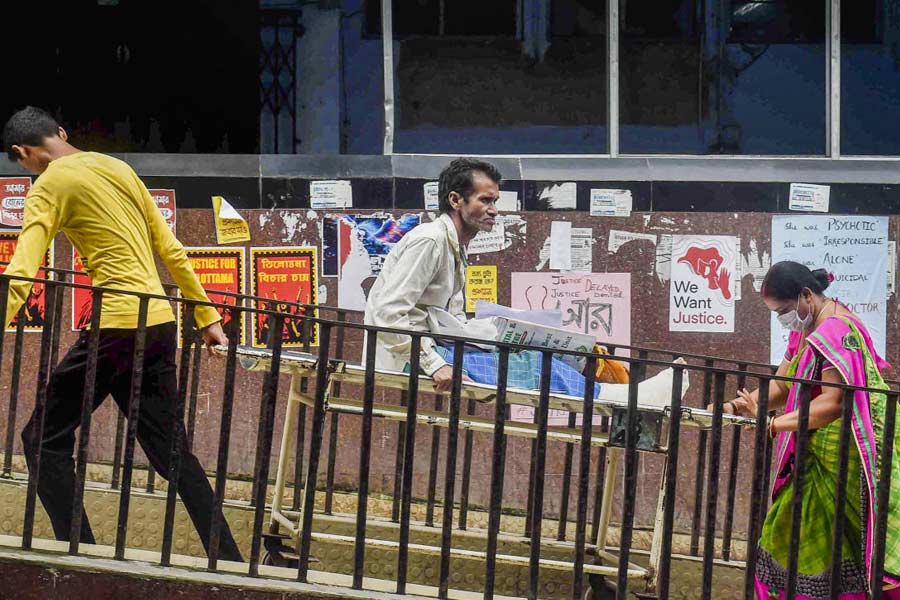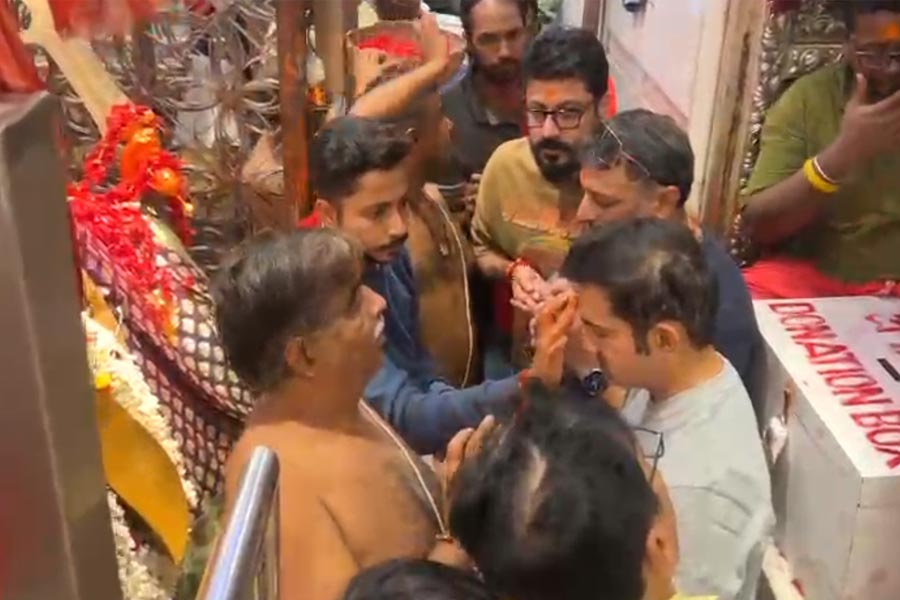Bengal’s government-run medical college hospitals are still not treating as many patients as they did before the junior doctors’ protests, the state told the Supreme Court on Thursday.
In the affidavit filed before the apex court during the hearing of the RG Kar rape and murder case, the state government said that even though the ceasework and hunger strike by junior doctors were over, the number of patients in the OPDs and indoor wards has not picked up like it was before the agitation.
The number of procedures and tests is far below normal, too, the state told the Supreme Court.
“Despite the withdrawal of the ceasework, agitation and hunger strike by junior doctors, health services are far from normal. The transition to normalcy will require sustained efforts from all stakeholders to ensure patient care services in the hospital attain the earlier levels,” a health department official said on Friday.
The junior doctors had started their ceasework after the rape and murder of a third-year postgraduate trainee at RG Kar on August 9.
The 42-day ceasework was withdrawn on September 21 but the junior doctors started a fast unto death at Esplanade on October 5. The hunger strike had continued till October 21.
Health officials and doctors said many patients were now getting treated in private facilities using Swasthya Sathi cards.
Some doctors said the festive season could also be a reason for the low rate of treatment.
Metro had earlier reported how OPD footfall, indoor admissions, surgeries, procedures and laboratory tests had dipped at government medical college hospitals because of the doctors’ agitation.
“Still, the numbers are nowhere near what it was in July,” said an official.
The daily OPD footfall in government medical colleges, which was around 78,000 in July this year, was 51,000 in October, a dip of around 35 per cent, the state government told the Supreme Court.
The number of daily admissions, which was around 6,500 in July, was around 5,300 in October, a fall of around 18 per cent.
The number of daily major surgeries at government medical colleges had also dipped by around 36 per cent in October compared to July, the state government told the apex court. The number was 328 in July and 205 in October.
The monthly performance of the linear accelerator, a device that generates high-energy radiation to treat cancer, has gone down from 6,218 in July to 4,036 in September, a fall of around 35 per cent.
The number of daily laboratory tests came down from approximately 54,000 in July to around 31,000 in October, a 43 per cent dip.
According to the state government, 38.55 lakh people were denied outdoor treatment, 1.72 lakh were denied indoor treatment and 19.87 lakh people were denied laboratory tests. The number of patients denied surgeries during the period was 1,500, it said.
At RG Kar, where the ceasework first started on August 9, a comparison of bed occupancy according to a “midnight census” was submitted by the state government to the Supreme Court on Thursday.
Sources said the bed occupancy came down by less than 50 per cent on October 28 compared to July 30.
“Though the ceasework has stopped, the medical colleges are struggling to return to normal,” a health official said.
“A government healthcare process needs efforts at several levels over a sustained period to reach a level of service. Once it dips from there, it takes a long time to attain that level again,” said a public health expert.
“There are patients who still think they would be denied treatment at government medical colleges. Many such patients are instead going to local private nursing homes to avail of Swasthya Sathi, the state government’s health insurance scheme,” said a health official.
According to the official, the yearly spending by the government under the Swasthya Sathi scheme is ₹2,500 crore, which is more than three times what it was during the initial period after its launch in December 2016.
However, senior doctors of government medical colleges said the junior medics were “working full-fledged”.
“All the junior doctors have rejoined work. The situation is normal now,” said a senior doctor at SSKM Hospital.











